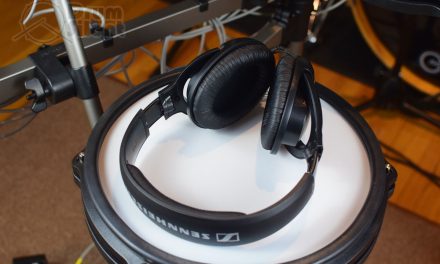Some drummers just hate electronic drums, and there’s some valid reasons for it. While I like both acoustic and electronic drums personally, I’m going to put myself in the shoes of somebody who hates electronic drums and find some reasons why.
Not Wanting To Deal With Electronics
Some drummers just don’t want to deal with electronics when it comes to drumming, and this is a fair reason to hate electronic drums. Electronic drums need a power supply. There is lots of cabling involved. There are electronic sensors involved with all the pads. Drum modules require you to use digital interfaces to work the kit. If you’re using a computer as a sound source then there is even more cabling and equipment involved to produce a sound. You also need headphones or a speaker.
If you’re the type that just doesn’t want to deal with all that then acoustic drums are going to be much more appealing. However if you are a tech savvy person that doesn’t mind dealing with electronics to play drums, then this argument might not apply to you.
Limitations With Expression & Dynamics
Some drummers just hate the limitations in expression and dynamics that come with most electronic drum kits. Acoustic drums offer many ways you can interact with them to create expressive sounds and dynamics. As you work your way around an acoustic cymbal or a drum head and rim you can create a lot of different types of sounds with very subtle differences between them.
Let’s just take a ride cymbal, for example. You can play from the edge through the bow all the way to the bell and get a wide range of tones and reactions from the cymbal depending on how you strike it and what type of sticks you are using. You can use standard drum sticks to get a sharply defined sound with strong attack, and you can use mallets or brushes to get a softer sound with less attack.
Now let’s compare that to an electronic ride cymbal pad. Even if you have a triple zone ride cymbal with edge, bow and bell zones you’ll mostly likely hear a distinct difference in each zone without nuance in between. Also, using different types of sticks or mallets isn’t going to really change the type of sounds that the pad can produce.
Now think about a cheaper budget electronic kit that has mostly single zone pads. There is going to a huge limitation in the types of sounds that can be produced from a kit like that when compared to an acoustic kit.
Hi-Hat Range & Pedal Feel
Some drummers just hate the way the hi-hats feel on electronic drum kits. This is especially an issue on budget to mid-level kits. It seems like most kits under $2000 have only three stages of hi-hat sounds that can be generated, which are fully closed, half-open and fully open. This can work fine if you know what you are working with, but it’s just not enough nuance for some drummers in terms of how the hi-hats can be played. The response on the hi-hat controller pedals that come with the cheaper electronic drum kits can feel lacking when compared to a hi-hat stand as well.
This is an area that is certainly being improved upon, especially with the more expensive electronic kits out there. There are now options on the market for digital hi-hat pads with much more expressive response and sound generation, and they can be mounted on hi-hat stands. But that can get pretty expensive if you go that route.
Drum Technique Limitations
Some drummers hate the limitations in techniques that can be used on electronic kits. There are some techniques that are just not very easy to reproduce, especially on cheaper electronic drum kits, but even with some of the more expensive electronic kits as well. And the kits that can simulate these techniques might struggle to do so in a natural feeling way.
Some examples here include brush techniques, cross sticking, rim shots, cymbal swells, cymbal chokes, and hi-hat foot splashes. Some electronic kits can simulate these techniques but it’s not always a guarantee and the results might not be the same as what you’ll get with an acoustic kit.
Unnatural Drum Sounds
Some drummers hate the unnatural drum sounds that are produced by many types of drum modules. Many low budget and mid range electronic kits have sounds that don’t offer much variation through the dynamic range. This can lead to unnatural sounding ghost notes or drum rolls that sound like machine guns.
Many electronic kits also have sounds that sound like studio produced sounds versus the natural types of sounds that come from a raw acoustic drum kit. The sounds on an electronic kit might not gel together as well and sound more “separate” or too clean when compared to playing an acoustic kit. Unnatural decay or too quick of a decay with drum sounds is another common issue especially with budget electronic kits. These types of issues can contribute to an electronic kit just not quite sounding the same as an acoustic drum kit.
Modern drum modules and drum VST software are getting much better at providing a more natural drum sound all the way around the kit, but they can still be limited in the types of expression and dynamics you can squeeze out of them.
Electronic Drum Pads Aren’t Completely Silent
Another thing some drummers hate about electronic drums is that they aren’t completely silent, even though they can still be much more quiet than an acoustic drum kit. You’re still going to make noise hitting the pads and it’s going to sound like you’re using practice pads to anybody that can hear you.
Due to this, some drummers prefer to go the route of mesh drum heads and low volume cymbals rather than an using an electronic drum kit for low volume practice. It’s kind of a trade-off of sorts. With electronic drums you’ll be able to hear a full drum kit sound in all it’s glory through your headphones, while with mesh heads and low volume cymbals you’ll retain a more natural drum and cymbal feel but have sacrifices the sound quality. It’s just a personal preference thing depending on the trade-offs you want to deal with between feel and the sounds produced.
Cheaper Electronic Drums Can Feel Too Small
Some drummers just hate how small some electronic kits and pads feel. This is especially an issue with the budget and even some mid-range level kits. The pads around the kit are usually smaller than their acoustic counterparts. Snare drum pads are usually less than 14 inches, and tom pads are rarely the same size as the acoustic versions. Cymbal pads are also usually smaller as well. The drum racks might not allow you to spread out the drum pads to create the same reach as a larger acoustic setup.
Of course this is an issue more with the cheaper kits. There are acoustic design electronic drum options on the market that are actually the same size as acoustic drums. But they are more expensive and will require a larger budget to attain.







